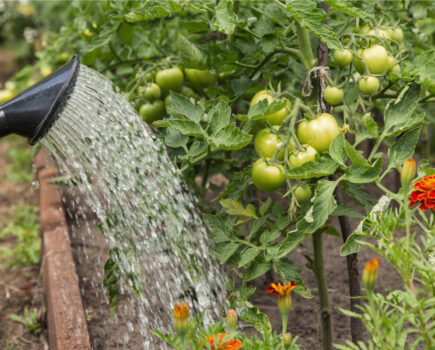Cut them back hard for good crops next year
Several years ago we planted a grape vine and fig tree against a south-west facing house wall and in the intervening years, both have grown well and, in the case of the fig, provided us with bounteous crops of fruits.
The grape also crops well, but we generally seem to time our annual holiday with the precious weeks when they ripen so tend to lose most of the fruit to the blackbirds and starlings – not that I begrudge them.
As winter closes in I give both plants a prune to keep them neat and encourage them to do well again the next year.
The vine is trained up a couple of trellises and over a window, and it appreciates a hard prune, so all that’s required is to cut back the fruited shoots to two-three buds.

As it is well established now, I leave the main framework intact, checking its ties and replacing any that are starting to fray.
If you have a younger vine that you want to keep training for a few more years, leave the appropriate shooted branches in place and tie them in. Remember though that in future years they will shoot from every joint along their length, so will need trimming down the line if they are not to take over and grow into a tangle.
Your vine can now be mulched and left alone until the spring when the buds will swell and off it goes again.
Next summer, give it a light trim and remove some of the leaves so sunlight can get to the ripening bunches of grapes. These can also be thinned to give you larger fruits.
Winter fig care
Cut back and remove fruits

1. Figs like a hard prune, so cut back any old, damaged and crossing branches and remove growth suckering up from the base before mulching.

2. You need to pick off the hard green figs that didn’t have time to ripen in the summer. You may be tempted to leave them and see if they ripen next year, but they won’t, so pick them off and compost them. Leave any fingernail-sized growths you find as these are next year’s fruits.
Let a shredder take the strain out of chopping

A new STIGA Bio Silent 2500 electric garden shredder has made my heart sing because the previous week I’d been emptying out one of our compost bins to make way for the autumn’s garden waste, and had to keep breaking off to bag up pieces of prunings that hadn’t yet broken down (they will go back into the pile for further composting).
When adding items to your compost, the pieces of green and brown waste need to be chopped up relatively small in order to break down swiftly and well, and even though I had chopped them up pretty small – it obviously wasn’t small enough.
And this is where the shredder comes in, because by adjusting the shredding wheel you can crunch through different sizes of garden waste up to 40mm in diameter and end up with small fragments that make the composting process more efficient, and with a better end product.

I wasn’t sure if an electric shredder would be as up to the task if I’m honest but I try and use electric options where I can as it’s more environmentally friendly. I’m impressed and glad I chose the electric option. It is compact, easy to wheel around the garden, and while it isn’t completely silent its noise isn’t terribly invasive.You will need to buy a 6m power cable separately, but this will also fit other garden equipment. This one costs around £249 from www.stiga.com and other outlets. (Price correct at time of going to press)
Find more tips, advice and articles like this at the Amateur Gardening website. Subscribe to Amateur Gardening magazine now





